In a high-octane performance management environment it is easy to overlook the central role of clinical stewardship. If we want genuine transformation in health services, clinical stewardship must be cultivated and its relevance to whole populations properly understood. Our Principal Adviser colleague, Dr Andy Haynes, sets out the case and the approach, based on his leadership and advisory experience.
The WHO recognise four pillars which create a health system; service provision, resource generation, finance and stewardship. The first three relate to structure or process and would be readily recognised. The fourth is less well defined and understood but clearly relates to culture. At its simplest it is the “responsible management of the well being of a population guided by underlying values and principles”.
These are unique and difficult times. The structural reorganisation into Integrated Care Systems is embedding and should help with the organisational, financial and contractual barriers that impair true system working. In the short term, however, it risks making the cultural shifts required to create collaboration and shared outcomes more difficult. The post pandemic environment and economic climate have required short term tactical responses, but these alone will not be sufficient. The lack of true system working drives inequity, variation and an emphasis on organisational rather than population health. Without stewardship, structural reform is unlikely to radically change operational delivery. It is worth reflecting that rapid changes in operational delivery were a feature of the pandemic response. The reasons for this are no doubt complex but three factors were:
- a reduction in bureaucracy
- relaxation of financial constraints and
- clinical stewardship
Empowering clinicians and clinical leaders created new pathways of care, collaborative decision making for resource prioritisation, workforce mobilisation across organisational boundaries and a scale mass vaccination programme. Did we do enough to embed and sustain this learning?
The major driver of demand for health and care services is the “inexorable increase in the volume and intensity of clinical practice” with smaller contributions from ageing and inflation. Clinicians make decisions every day which impact on resource utilisation, yet often without stewardship for the population as a whole. This reflects how healthcare resourcing works with fragmentation across organisations and services, making a view of the “whole” difficult and fostering competition above collaboration. This has been likened to the economic theory of the “Tragedy of the Commons”, in which overconsumption and underfinancing depletes a common resource. One solution to this problem is the collective responsibility observed by Elinor Ostrom in a range of systems and for which she received a Nobel prize. Effectively:
- allow decisions to be made by those closest to the use of resources
- allow them to create local rules
- monitor adherence and create an easy means to settle conflicts
This viability of this solution is dependent on the relationships between decision makers and the creation of highly connected, interdependent user networks. On this basis the Oxford group led by Muir Gray and Tim Wilson has suggested that clinical stewardship is central to changing delivery models in healthcare systems.
The quadruple aim for Integrated Care Systems underpins population health as a common purpose. Population health management effectively requires an understanding of the subgroup we are trying to impact, targeted transformation based on that insight and evaluation of outcomes. Clinicians are critical, though not exclusive contributors to this. The cognitive diversity of bringing a group of clinicians from across a pathway together to generate insight is necessary to create “one version of the truth”. Whilst clinicians will need support from change management expertise, it is important that they lead and own transformation “bottom up”. They will also have an important role in defining the data collection to make evaluations and reflect on the findings.
Connecting these themes
If population health is the common purpose, all clinicians need to have an agreed understanding of the demographics of the whole population and that localised to relevant place or neighbourhood. This needs the input of all organisations including public health and social care, hence it may be generated by the Integrated Care System/Health and Wellbeing Boards but must be visible, socialised and communicated widely.
Clinical strategies at system and organisational levels need to be aligned, cover whole pathways not “organisational slices”, embrace local health inequalities and prevention opportunities. Establishing clinical networks based on pathways may present an opportunity to foster engagement and stewardship. The focus on key objectives and targeted subpopulations needs to be clinically driven, shaped with citizen input and communicated effectively.
Clinicians need clarity on delivery; is this at place, neighbourhood or provider collaborative level and how are clinicians from the relevant network engaged in the service delivery transformation?
Each network should produce an annual report on progress which is shared widely and communicated to citizens. This should be the basis of a learning healthcare system.
Senior clinical leaders have a key role to ensure that the voice of the clinical networks is represented at the Integrated Care and Provider Collaborative Boards. Whilst governance and structures will play a role in this the softer building of relationships and trust is critical. Creating the spaces and environment where these relationships develop is a function of senior leadership.
Those leading in this complex environment need support to enhance their skill sets for system thinking; the last 3 years have given little headroom outside tactical, short-term responses. Time spent together is as important as the content of any programmes. If we want system working to be the default then we need to expose trainees to an understanding and appropriate skills early in their careers across all organisations; it needs to be part of development not something to learn once a position of influence is reached.
Clinical stewardship matters but it needs to be fostered and nurtured rather than left to grow organically. The lessons of the pandemic suggest that the barriers of headroom and financial constraints must be managed for this to happen.


